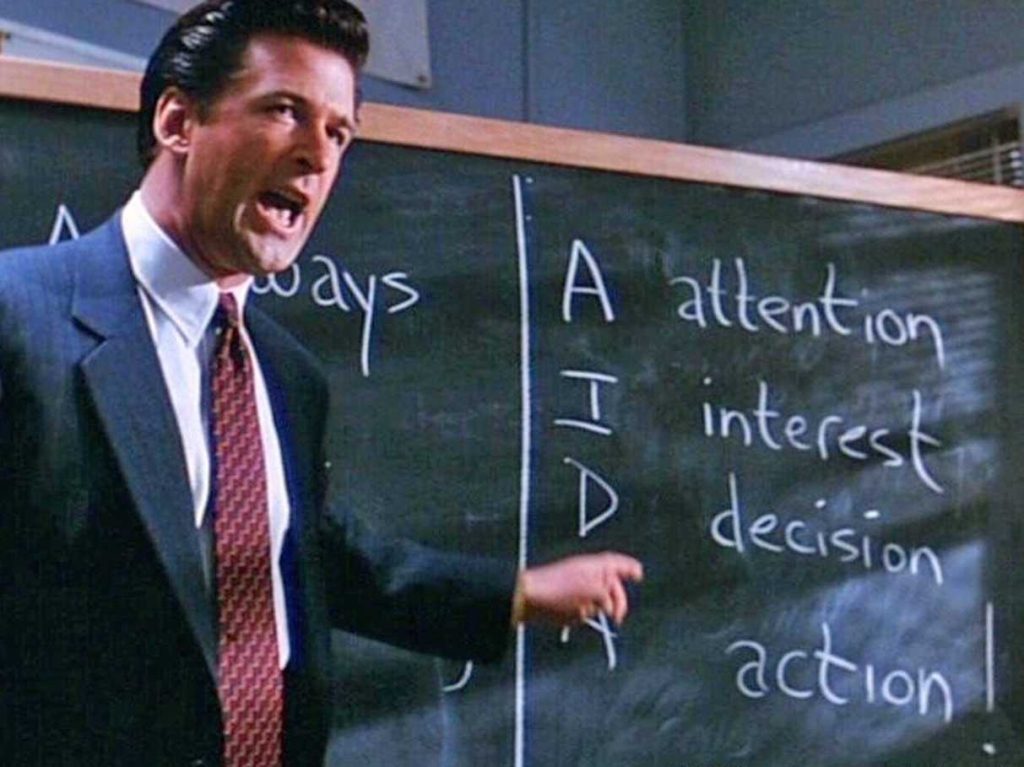
An Updated AIDA for Today’s Buyer (2025)
An Updated AIDA for Today’s Buyer (2025)
Everyone in sales, marketing, or business has heard of AIDA—Attention, Interest, Desire, Action. Pop culture cemented it with Alec Baldwin’s scene in the cult classic movie Glengarry Glen Ross. But did you know that model goes back much further? That’s right, advertising pioneer Elias St. Elmo Lewis first created this model in 1898.
Context matters. In 1898, the telegraph was standard for business communications, horse-drawn carriages dominated transportation, many homes lacked electricity and indoor plumbing, and the average annual wage was $500. Yet here we are, 127 years later still teaching sellers that this model is still as relevant today as it was then. As if the internet, social proof, and cross-functional buying committees never happened.
Today’s buyers have global options, abundant information, formal education, and powerful tools like AI, review platforms, and peer communities. They make careful, consensus-driven decisions—not snap judgments after a flashy pitch. That’s why I believe it’s time to evolve the model.
It’s time to retire the old AIDA model and usher in the new AIDA: Awareness → Investigation → Deliberation → Approval
Awareness: Be a Signal, Not Noise
The goal today isn’t to grab attention with volume and charisma. It’s to be recognized as relevant and credible by both the market and the buyer’s own needs. Buyers don’t want a flashy, well-crafted pitch, they want insight. They want useful perspectives, consistency, and trustworthiness built from ongoing commitment. Awareness also means helping them uncover their own needs, often tied to emotions like security, pride, empowerment, clarity, or pain avoidance. It’s no longer sell the sizzle; it’s about sparking awareness of what’s visible and what’s hidden.
Investigation: Empower the Search for Clarity
Once aware, buyers will research on their own terms. They don’t want to rely on a paid spokesperson’s claims, they want tangible proof. Make it easy for them to find answers with transparent resources, real results, and third-party validation. Don’t resist comparison, welcome and encourage it. Invite them to see how you stack up, even against competitors. That openness builds trust and shows confidence in what you offer. Additionally, it allows the buyer to bridge emotional triggers with logical reason.
Deliberation: Help Them Reach Consensus
Most B2B deals aren’t decided by one person. Committees review, debate, and weigh risks. This is where deals often stall. A great salesperson helps the group move towards clarity. Know the roles in the room: the champion, the skeptic, the decision maker, and the contrarian. Arm your champion with tools to sell internally. Meet with skeptics early to understand their concerns. Help the group build alignment instead of letting conflicting agendas grind progress to a halt.
Approval: Build Confidence and Reduce Friction
Closing today isn’t about a single “yes.” It’s about stacked approvals—budget, legal, security, procurement, leadership. Treat this step as a process to design, not pressure. Create resources that address ROI, timelines, and risks. Align with budget cycles and break large commitments into smaller approvals if needed. The goal is to make the final decision feel inevitable, safe, and supported.
Why This Shift Matters
The old AIDA moved individuals down a funnel as fast as possible. The new AIDA—Awareness, Investigate, Deliberate, Approval—matches how real decisions are made in 2025. It gives buyers space to research, deliberate, and gain confidence, while positioning you as the guide who facilitates their process. The result is stronger buy-in, less friction, and healthier relationships after the deal is signed.
The real question is this: where are you still selling like it’s 1898, and how could your results change if you started selling for 2025?

